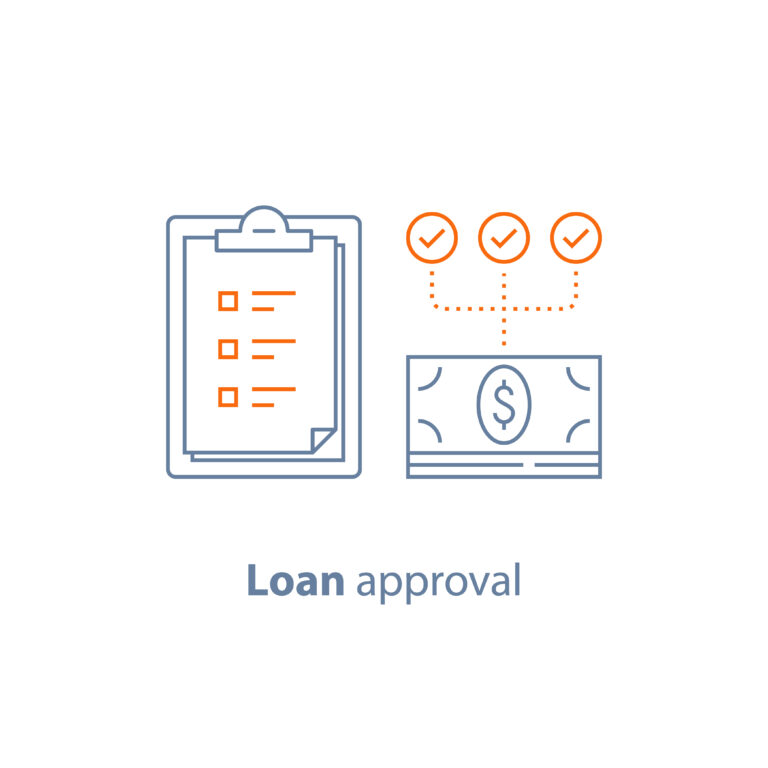A conventional loan calculator helps you estimate your monthly mortgage payment before applying for a loan. It factors in the loan amount, the down payment you plan to make, the loan term, and a fixed interest rate to give you an estimate of what you’ll pay each month.
Whether you’re shopping for a standard conventional loan or a 3%-down conventional 97 option, a conventional home loan calculator helps you plan ahead. It includes costs such as your principal, interest, private mortgage insurance (PMI), property taxes, and homeowners insurance, giving you a realistic monthly estimate.
Use the calculator below to see how your down payment or rate affects your monthly payment.
🏠 Conventional loan calculator
Disclaimer: The information provided in this article is for informational purposes only. It is not intended as legal, financial, investment, or tax advice, and should not be relied upon as such. Consult a licensed financial advisor or tax professional regarding your personal financial situation before making any decisions.
Your estimated monthly payment includes principal, interest, and mortgage insurance. Adjust the sliders to see how a higher down payment or shorter loan term changes your total cost.
Small changes like increasing your down payment can reduce your PMI and lower your monthly mortgage payments.
How your conventional loan payment is calculated
A monthly mortgage payment is a combination of several items. Understanding each helps you know where your money goes every month and how to adjust it.
Principal and interest
Each mortgage payment consists of two components: principal and interest. Principal is the total amount you borrow, while interest is what the lender charges to loan you money.
Most loans are amortized, meaning in the early years of your loan, most of each payment goes toward interest. As you pay down the balance, more of your payment goes toward the principal.
For example, if you borrow $350,000 at a 6.75% interest rate on a 30-year fixed mortgage, your monthly principal and interest payment would be around $2,270.
Over the first year, you'd pay roughly $23,400 in interest and only $3,840 toward principal.
For each following year, you’d spend slightly less on your interest and more on your principal balance, and by the last year of your loan, you’d have very little interest left to pay, and your mortgage payments would be allocated almost entirely toward your remaining principal balance.
Private mortgage insurance (PMI)
Private mortgage insurance (PMI) is the extra fee you pay if you put down less than 20% in the form of a down payment. PMI protects the lender in case you default on your payments.
The cost of PMI typically ranges between 0.2% and 2.0% of the loan amount annually. However, factors like your credit score, your down payment amount, loan types, and debt-to-income ratio influence the cost of PMI. The larger your down payment, the less PMI you’ll pay.
The good news is that PMI isn’t permanent. You can request for PMI removal once you’ve built at least 20% equity in your home. Alternatively, you can wait until your lender automatically cancels it when your loan-to-value ratio drops to 78%.
Taxes and homeowners insurance
Lenders usually collect property taxes and homeowners insurance as part of your monthly payment and hold them in an escrow account. When those bills come due, the lender pays them on your behalf.
The national average for property taxes is around $2,459 per year,[1] and annual homeowners insurance averages $2,377 depending on location and coverage.[2] These costs are included in the total monthly payment estimates.
Minimum down payment for a conventional loan
Conventional loans are flexible when it comes to down payments, but the amount you put down impacts your monthly payments. A conventional 97 loan allows qualified first-time buyers to put down as little as 3%. This makes homeownership accessible to homebuyers who don’t have large savings.
If you don’t qualify for a conventional 97 loan, most lenders accept 5% down for standard conventional loans. This small increase can help reduce your PMI and interest rate slightly. But if you want to avoid PMI altogether, you need to make a down payment of at least 20%.
Second homes and investment properties have stricter down payment rules. Expect to put down at least 10% for a second home and 15–25% for an investment property, depending on the lender and your financial profile.
Enter different down payment amounts in the conventional loan down payment calculator above to see how your PMI changes and what that means for your monthly payments.
Conventional 97 loan explained
The conventional 97 loan is perfect for first-time home buyers, as it requires just 3% down. To qualify, you need a credit score of at least 620 and must be purchasing a primary residence.
There are no strict income limits unless you’re applying under Fannie Mae’s HomeReady or Freddie Mac’s Home Possible program. You must also be a first-time buyer, defined as someone who hasn't owned a home in the past three years.
Try the calculator with a 3% down payment to see your estimated cost.
Conventional loan requirements
Conventional loans have stricter qualification requirements than government-backed loans, but they offer more flexibility and lower long-term costs if you meet the criteria. To qualify, you must meet the following minimum requirements.
Credit score
You need a credit score of at least 620. But with a score of 740 and higher, you’ll get the best interest rates and lower PMI. Even a slight difference in your credit score could mean thousands in savings over the life of the loan.
Debt-to-income ratio (DTI)
Your debt-to-income ratio, or DTI, is the percentage of your gross monthly income that goes toward debt payments. Most lenders cap DTI at 45%, though some accept as high as 50% with strong compensating factors such as high credit scores or cash reserves.
Cash reserves
Lenders want to see two to six months of mortgage payments saved. This reassures lenders that you can handle your monthly payments without defaulting if your income temporarily dips.
Loan limits
Conventional loans must also stay within the conforming loan limits set annually by the Federal Housing Finance Agency. The conforming loan limit for 2025 is $806,500 in most areas and $1,209,750 in expensive markets.[3] If you need to borrow more, you'll need a jumbo loan with stricter requirements.
Property eligibility
You can use conventional loans to finance various properties, but they must meet certain occupancy and condition standards. You can use it to purchase or refinance a 1–4 unit property, as long as at least one unit is owner-occupied.
Note: The stronger your overall financial profile, the better your loan terms. A high credit score, lower DTI, and larger down payment can all lower PMI rates and reduce interest costs.
Conventional vs. FHA loan: Which is cheaper?
Wondering which mortgage option will save you money? The right option depends on your credit score, down payment, and how long you plan to stay in the home. An FHA vs. conventional loan calculator can help you run the numbers side by side.
FHA loan overview
Backed by the Federal Housing Administration, FHA loans are designed for first-time home buyers with low to moderate income. You can qualify with a credit score as low as 580 and a down payment of just 3.5%.
However, FHA loans require both an upfront mortgage insurance premium (1.75% of the loan) and an annual MIP (0.15%-0.75%) for the life of the loan.
Conventional loan overview
Conventional loans typically require 3% to 5% down and a minimum credit score of 620. PMI applies if you put down less than 20%, but it’s cancellable once you’ve built at least 20% equity in your home.
How to lower your conventional loan payment
If you want to save hundreds per month and thousands over the life of the loan, here’s what you’ll need to do.
Boost your credit score
A higher credit score can lower your interest rate and PMI. Paying bills on time, reducing credit card balances, and avoiding new debt before applying can help improve your score.
Increase your down payment
Increasing your down payment even by a small amount can make a difference. For example, raising your down payment from 5% to 10% could cut your monthly PMI by more than a hundred dollars each month and your total interest paid by tens of thousands over 30 years.
Compare multiple lenders
Mortgage rates and terms vary significantly by lender. So, it’s wise to shop around to ensure that you’re getting the best possible deal.
Get at least three quotes from lenders, including traditional banks, credit unions, and online lenders. Don’t just compare rates, but also lender overlays, PMI, and closing costs.
Choose a shorter loan term
Opting for a 15-year loan means a higher monthly payment but far less total interest. Over time, it can save you hundreds of thousands of dollars compared to a 30-year term.
The bottom line
Conventional loans remain one of the most flexible and cost-effective mortgage options, especially if you have good credit and a large down payment saved.
A conventional loan mortgage calculator helps you estimate your total monthly payment, including taxes and insurance, before committing. Use the calculator to plan your budget and compare real-time quotes from top lenders to find your best conventional loan.
Related reading
FAQ
What’s the minimum down payment for a conventional loan?
The minimum down payment is 3% through the conventional 97 program for first-time buyers. Standard conventional loans typically require 5% down. To avoid PMI, you'll need at least 20% down. Investment properties and second homes require 10%-25% down.
Can I get a conventional loan with bad credit?
The minimum credit score for most conventional loans is 620. But some lenders accept as low as 600 with compensating factors.
If your score is below 620, consider FHA loans (minimum 580) or work on improving your credit before applying.
How long do I have to pay PMI?
You can cancel PMI once you reach 20% equity in your home. However, the federal law requires lenders to automatically remove PMI when your loan balance reaches 78% of the home’s original value.
What’s the difference between Conventional 97 and HomeReady?
Both allow 3% down payments, but HomeReady has income limits and added benefits like lower PMI rates. Conventional 97 has no income limits but is only for first-time buyers.
Can I use gift funds for my down payment?
Yes, conventional loans allow you to use gift funds from family members for part or all of your down payment. The donor must provide a gift letter stating the money doesn't need to be repaid.



